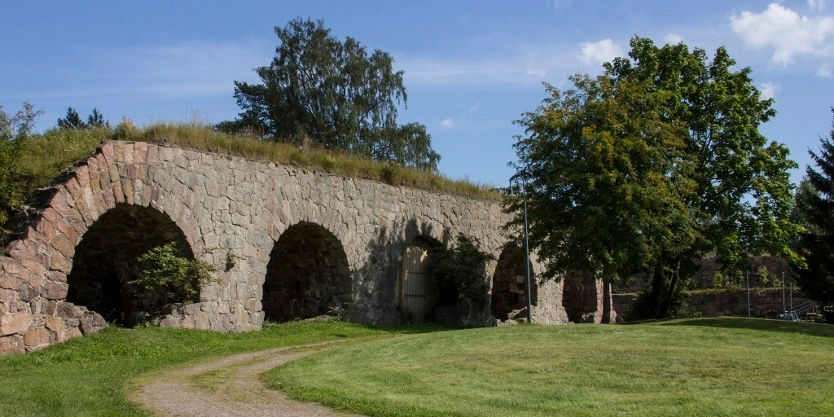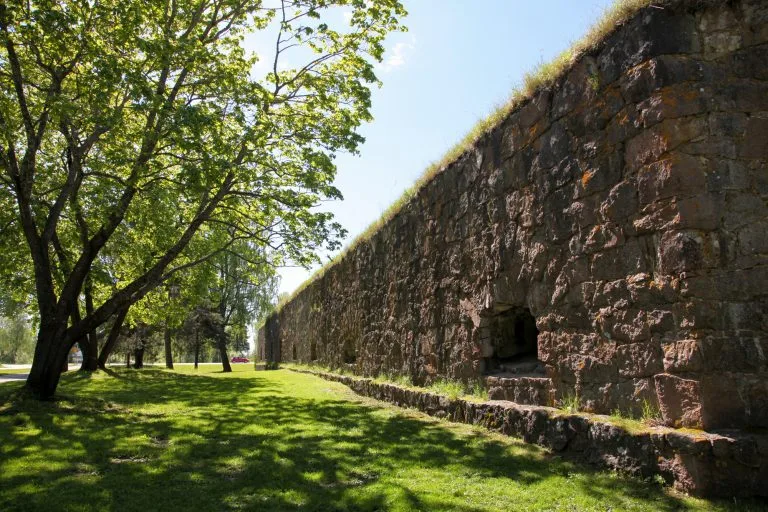
Ehrensvärdin path

Ehrensvärdin path
The beautiful Ehrensvärdin Path, which begins at the bastions of Hungary and Rosen, is historically interesting.
On this two-kilometer path, you can enjoy nature while learning about the history of Loviisa and the different stages of the construction of the fortifications through the information boards along the trail.
In the first half of the 18th century, the Swedes began strengthening their eastern border. The first fortification projects were a planned double fortification for the Loviisa area, where the Svartholm sea fortress protected Loviisa from threats from the sea, and the city fortifications of Loviisa were meant to protect against threats coming via the Great Coastal Road.
According to the plan drawn up by Augustin Ehrensvärd, a highly regular six-bastion central fortress was intended to be built in Loviisa, with external fortifications planned for the weaker points. The goal was to create a fortress that would require 2,000 men to defend, but which could accommodate up to 8,000 men if necessary.
Construction of the fortress began in 1748. On the eastern side of the fortress, bastion-shaped fortifications were built on both sides of the King's Road, named Rosen and Ungern. Each fortification was equipped with 22 gun casemates and a firing platform running along the roof. The fortifications were named after Finland's then governor-general G. Rosen and General von Ungern. The fortress was never completed, as King Gustav III ordered the construction to be halted in 1775. Many different structures from that time can still be seen today.
The Ehrensvärd Path is an idyllic city walk that circles old moats and fortifications. Numerous signs have been set up along the path to tell about the fortifications and the factors influencing their construction, without forgetting the local nature and the way of life at the time.
Welcome to this rewarding city walk.
Featured in this tour





